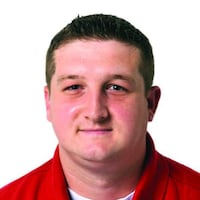By the numbers
$267,000: Amount spent by the city to keep air traffic control tower running through Sept. 30, 2013.
$215,000: Amount spent by the city of Springfield for tower operation and maintenance last year.
$545,000: Grant funds used by city to keep operating the tower from October 2011 through September of 2012.
The city will likely spend up to $267,000 to operate the air traffic control tower at the Springfield-Beckley Municipal Airport for another year in hopes of attracting drone businesses and bringing a new mission to the Springfield Air National Guard Base.
An operating tower is especially critical to securing a training mission for the 445th Airlift Wing Air Force Reserve based at Wright-Patterson Air Force Base, city leaders said.
“We feel it puts us in the best position to go after that kind of work,” said Tom Franzen, city economic development administrator. “Without it, if we let that tower go dark, it could be a tough sell. For the time being, we’re going to stay the course, at least for another year.”
Last September, the city took over operations at the air traffic control tower at a cost of $760,000 — including $545,000 in grant funds and $215,000 in city money — after the Air Guard changed its mission to remotely flying unmanned Predators and stopped staffing the tower.
City commissioners will likely vote Sept. 11 ontwo items related to the air traffic control tower — a contract with Dynamic Services Inc. for about $223,000 for tower operation services and another contract with Vaisala Inc. for equipment maintenance services for about $44,000. Both contracts would run until Sept. 30, 2013.
The military spent more than $31 million on upgrades that included the new air traffic control tower, fire station, and renovated hangar and taxiway before the base was realigned in 2005 as part of the Base Realignment and Closure process that stripped it of its F-16s.
Now the Air National Guard has two missions: analyzing data for the National Air and Space Intelligence Center and remotely flying Predators, neither of which use the control tower.
Mayor Warren Copeland believes the gamble on paying for the tower is worth it and could bring more jobs, especially those in the unmanned aerial vehicle, or UAV, testing and manufacturing industry, to Springfield.
“I’m sure all of us are concerned about how long we can keep doing that if it doesn’t produce … If it doesn’t produce, at some point, we’re going to have to pull the plug,” Copeland said. “We just don’t think we’re at that point yet, but it can’t go on forever.”
The city also provides fire services, and air field and grounds maintenance on the 1,800-acre complex. If it ceased air traffic control and fire operations at the airport, it would lose its Part 139 certificate, which allows nine- to 30-passenger aircraft to fly out of the airport.
The 445th Airlift flies C-17 cargo transport planes, which replaced the C-5 Galaxy, and the unit currently trains for assault landings at out-of-state sites.
But U.S. Rep. Steve Austria, R-Beavercreek, said the fuel for those out-of-state training runs are a big expense. So building a 3,500- to 5,000-foot runway nearby would reduce costs and increase efficiency. The existing Springfield runways could be used temporarily, Austria said, until a new strip is built at a cost of $10 million to $15 million.
The savings on fuel could offset the construction costs in three to five years, Austria estimated, and that mission could subsidize part of the costs to run the tower.
The C-17s use the airspace near the Springfield airport, but are waiting for decisions to be made by the federal government on the training site.
Austria included language in a budget bill requiring the Air Force to do a cost analysis of these type of Reserve operations, including for the 445th. The bill has passed the House and is waiting for Senate action.
“It make sense if they could just fly 10 or 15 minutes away and conduct those same exercises that they are flying hours away for right now,” he said.
Springfield is also working to help Ohio be selected by the Federal Aviation Administration as a testing site for UAVs later this year, Franzen said. The FAA began the process to select six test areas in March.
The city also wants to build a $2.3 million hangar complex at its airport to attract drone developers.
Franzen said the city is part of the regional and state strategy to bring the UAV testing to the area.
“As the support networks become established and we continue as a state to go after that work, we feel having that tower and those services available at the airport puts us in the best possible position to gain some of that work,” Franzen said.
About the Author
